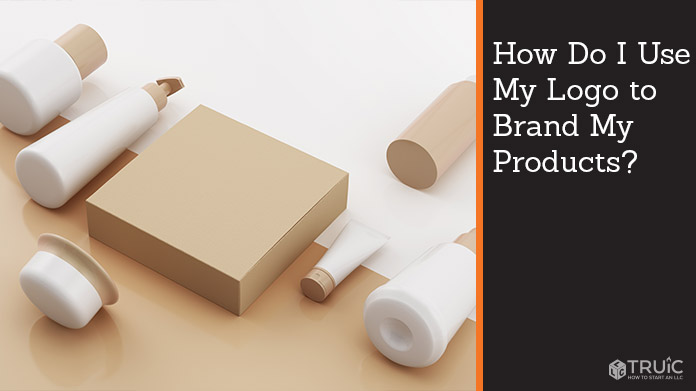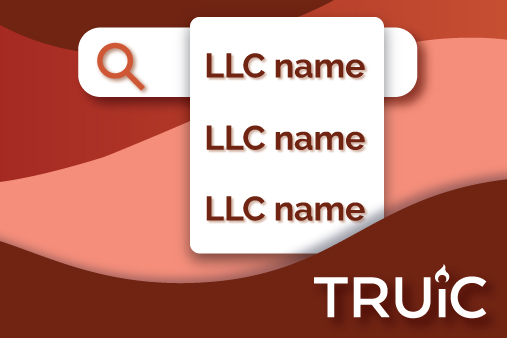How Do I Use My Logo to Brand My Products?
Placing your logo on something is like writing your name on a contract. Whatever it is that you’re endorsing has to be aligned with the values behind your brand. T-shirts, consumer goods, shipping containers: there needs to be a strategy behind how you use your logo. We’ll look at what that should mean to you and how you can start making headway to position and format everything to look picture-perfect. However, if you are still in need of a logo, check out our Free Logo Generator and get the ball rolling for your business.

What Is a Product?
The definition of a product can be anything that your company makes or uses. When we think of products, we tend to think in terms of consumer goods. But when it comes to branding products, you can expand that definition. So maybe you think of different items in your office as products. For example, if clients come to visit you, they instantly notice that your office chairs bear your logo. It’s a way to create an experience for both clients and employees that is aligned with your branding.
There are also traditional customer-facing products. If you happened to make widgets, you might ask if the logo should be featured on the front or the side of the widget. But you could also put the logo underneath the widget where you’d have to look to see it. Or you might just place the logo on the packaging of the widget and not the actual item. The right answer will depend on what you do and who your audience is.
Customer Preference
You need to first understand how your customers are most likely to use your products before you start deciding where to place your logo. Would your customers prefer a branded experience or would they prefer something subtle?
For example, many luxury brands are designed to get other people’s attention. A Louis Vuitton purse may have the logo splashed all over it as a way to catch the eye. When so many people see this brand as a status symbol, it pays for the company to make buyers aware of it.
Some customers will want an understated logo though, one that is only visible to those who know where to look. And there are plenty of people who don’t need a logo on their products at all. In this case, you can consider placing the logo on the packaging as a way to reinforce your brand.
Whether you sell power tools or offer Swedish massages, your target demographic will share some things in common. You have to narrow down their needs before you start figuring out where and how to display your logo. You might choose to set it off to the side for one product while displaying it front and center for another. It all depends on who you want to appeal to and how the display fits in with the rest of the company image.
Look to Your Competitors
What have your competitors done to set themselves apart in your industry? Now is the time to really dig into other companies’ efforts. You should be checking the websites, examining business cards, signing up for email lists, and seeing what kind of swag is offered.
If you can afford it, you can order one of a competitor’s smaller items to get a sense of what kinds of packaging is used and whether the logo is incorporated anywhere on the products. You might get some good ideas this way, but the goal is more to identify where the market gaps are so that you can fill them in.
Remember that your competitors have probably adapted the logo placement over the years to keep up with the needs of customers. If you don’t have any logo recognition yet, you can consider keeping it fairly understated for now until you do build up your reputation. And if you need help protecting your work from new competitors on the market, check out our guide on How to Trademark Your Brand.
Experimenting with Branding
When Ty Beanie Babies first got its start, the creator was obsessed with perfecting his product. He might come out with one design just to change it the next day, and there was nothing off-limits to him. Everything that related to his company was essentially up for grabs.
This unintentionally became a huge draw for people. It created scarcity based on everything from logo tags to the number of spots on the Beanie Baby giraffe.
While we certainly don’t encourage you to change your marketing strategy every day, it doesn’t hurt to switch it up a little based on what you’re selling. For example, maybe you come out with a basic T-shirt for $9.99 that bears your general logo.
Six months later, you debut a luxury hoodie with better stitching and more comfortable fabric for $75. In this case, you can opt for a version of your logo, one that elevates it to a higher status. For example, redesigning your standard image to a purely metallic or black color.
Some brands will need to change their logo based on practical reasons too. For example, if your logo is red and you want to feature it on a red T-shirt, you’ll need a way to distinguish the logo from the background. If you make the same base product in 20 colors, you’ll need to consider how your logo colors will affect the colors of your products.
You can also invert the colors as a way to show that this is a better product than your standard line. People will notice the difference immediately and are more likely to associate you with being a detail-oriented company.
Expand Your Branding
There are plenty of ways to incorporate your logo that you might not have even occurred to you. From vendors to customers, customized company products can go a long way. But this is obviously a loaded tip for any entrepreneur who wants to pinch pennies.
Because you might not have the disposable funds to purchase cardboard boxes with your logo stamped on them or to use custom stationery when you send letters to customers. This is a judgment call that you have to make based on your other marketing efforts, though we generally encourage more branding than less.
Splurging for an unboxing experience that feels every bit as luxurious as the products inside makes sense for some companies. For others though, the owners are just wasting good money on things that will ultimately end up in the trash.
If you still need help with starting your brand, check out our top 5 best logo makers of 2026 and find the best tool to help you get a logo for your small business.
The Right File Formats for Branding Your Products
When you’re considering the best file formats for branding your products, it generally makes the most sense to use a vector file, like an SVG. These files create paths that tell a computer how to draw. So instead of pixelating your logo like a standard raster (e.g., PNG), you’re able to scale the logo exactly how you need it.
If you were creating three versions of your product (small, medium, and large), you’ll be able to scale the text and images of your logo so it’s proportional to the size of the product (without damaging the image quality). You can also export files to the common ones we use today, such as a JPG or PNG.
Making It Count
Whether you choose to go big or not, you should never miss an opportunity to incorporate your logo. You worked hard on it and if it says something to you, eventually it’s going to start to say something to your customers. Branding is a long-term game, not a short-term venture. Even if you don’t see the immediate effects of putting your logo on something, doesn’t mean it isn’t working.
You need to give your customers time to get used to you. So even if you’re passing out business cards stamped with your logo and they end up getting thrown away, at least people saw a representation of the company. Your logo is a symbol of what you have to offer, so your real objective is to ensure that symbol means something.

